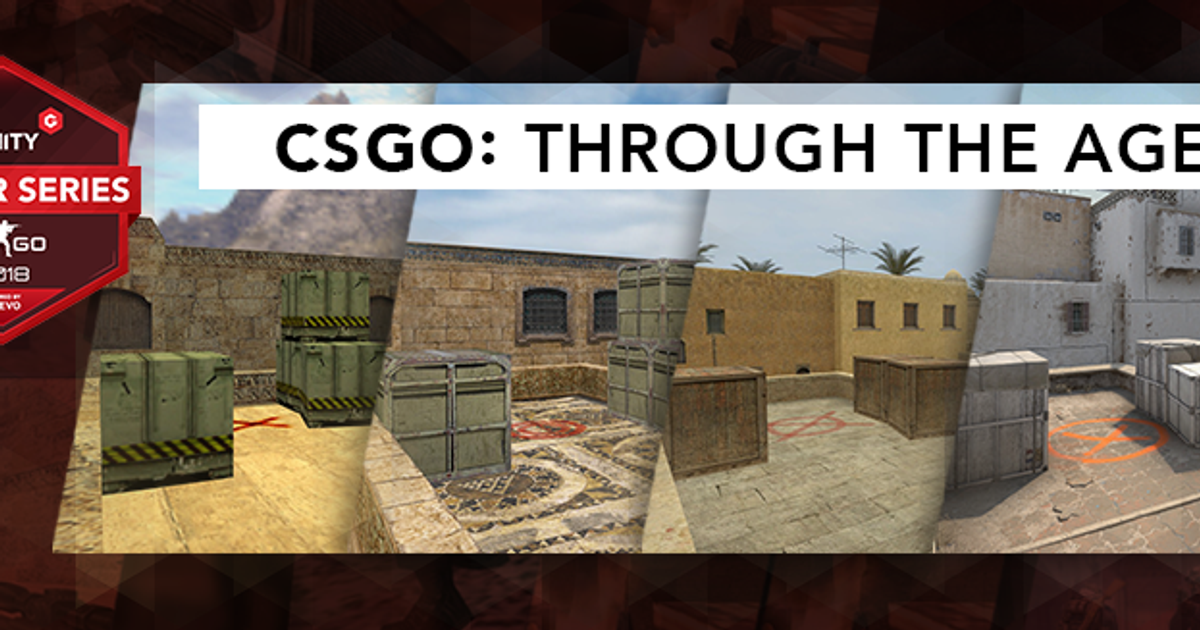After two exciting seasons as part of the Elite Series, Gfinity is shifting CS:GO into its own dedicated Winter Series for 2018. With over $50,000 in cash up for grabs, the Gfinity Counter-Strike: Global Offensive Winter Series 2018 is now open for registrations to teams of all skill levels across Europe and North America. So with the series kicking off next week, it’s time for a brief history lesson as we explore CS through the ages.
Humble OriginsHow did such a goliath of a franchise start out? From relatively small roots – the original Counter-Strike was initially built as a mod for Half-Life. Using Half-Life’s GoldSrc engine as a solid core to build a fast-paced team-based shooter around, Minh Lee and Jess Cliff designed the first version of Counter-Strike in 1999. Half-Life's developers Valve quickly spotted how popular the mod was becoming and acquired the Counter-Strike IP whilst also bringing Lee and Cliff onboard as full-time staff to produce a full stand-alone Counter-Strike game, which was released on Microsoft Windows in 2000.
The foundations for what we know today of CS were laid right away in this first instalment. Game modes like Bomb Defusal and Hostage Rescue, money and weapon mechanics, fast-paced rounds with players not respawning instantly upon death and the eternal battle between terrorists and counter-terrorists. The game that would go on to be known as Counter-Strike 1.6 – named after the final update the game received – became pivotal in esports history when the E-Sports Entertainment Association League launched the world's first professional fantasy esports league in 2004 and used Counter-Strike as its platform. By embracing professional match play and competition so wholeheartedly and building such a balanced platform, CS had cemented its place in esports and gaming history – and the impressive sales figures more than backed it up.
Condition ZeroBuoyed by their breakout success, great things were expected from the follow-up CS game, Condition Zero. Initially development fell to Rogue Entertainment, but when that company went bust late in 2001 Valve handed the property over to Gearbox Software. Their idea was for an ambitious revamp of the base game featuring expanded single-player elements, new weapons, realistic foliage effects and dynamic weather, but unfortunately all this did was push the game far past its initial 2002 deadline. Valve lost patience and transferred development to a third studio, Ritual Entertainment, who once again remade the game. After finally being completed by a FOURTH studio, Turtle Rock Studios, Condition Zero was finally released in 2004 – two years after initial expected release.Confused? Don't worry, you aren't the only one.The game we eventually got was decent enough, but understandably rather messy having been through so many revisions and passed around so many different studios. Worse, Valve had spent the intervening time developing an all-new engine, making CS: Condition Zero largely obsolete upon release given it was still running on the now-old GoldSrc engine.
Finding Success At SourceAfter such a messy period with Condition Zero, Valve and Turtle Rock immediately decided to go back to basics – and just six months later they broke cover with CS: Source, a straight-up remake of the original CS 1.6 built on Valve's brand new Source engine. The focus went right back to what made CS great in the first place: fast-paced competitive multiplayer matches with simple objectives and crisp gameplay. Released alongside Half-Life 2, CS: Source was a great demonstration of the Source engine's capabilities, and the Counter-Strike series was back on solid ground.By this point, the competitive esports scene for CS was in full swing, and Source remains hugely popular in online circles to this day with Valve continuing to offer support, updates and new ports (to Mac OS X in 2010 for example).
Time To Go GlobalIn 2012 came the CS game we all know and love today: Global Offensive. Development began when Hidden Path Entertainment attempted to port CS: Source to then current-generation consoles and Valve spotted an opportunity to not just revamp the existing game, but create a brand new one with new technology and lessons learned from previous installments. Out of this came CS:GO in August 2012, which successfully built on Source's rock-solid foundations and added new features: weapons like the Molotov/Incendiary Grenade, new game modes like Wingman, Arms Race and Flying Scoutsman, and later on weapon skins and a whole new virtual economy around the game.Combined with more emphasis than ever on matchmaking and dedicated servers, CS:GO was designed from the ground up for both casual online players and the highest level of competitive play – so it's no surprise that the esports scene around CS went up another level once this game dropped. The CS Majors have now become the elite level of international CS esports, with original prize pools of $250,000 rising to upwards of $1,000,000 by MLG Columbus 2016. The World Esports Association was also founded in 2016 by the ESL and many leading teams, further cementing and professionalizing CS and esports competition.CS:GO came to Gfinity in 2015 as part of the Gfinity Championships, and has been a core part of what we do ever since, featuring prominently in the inaugural two Elite Series seasons; Epsilon took the Season 1 title before Team EnvyUs defeated them in the Season 2 finals. And with the Winter Series 2018, CS remains a core part of Gfinity – and one which you can be a part of. All participating teams will compete in CEVO’s signature eight-week Swiss style regular season format in an attempt to qualify for the Online Playoffs, and the chance to climb the ladder of ranked skill divisions. Team registrations are now open here – head over to http://cevo.com/gfinitycsgo to sign up now!
Explore new topics and discover content that's right for you!






